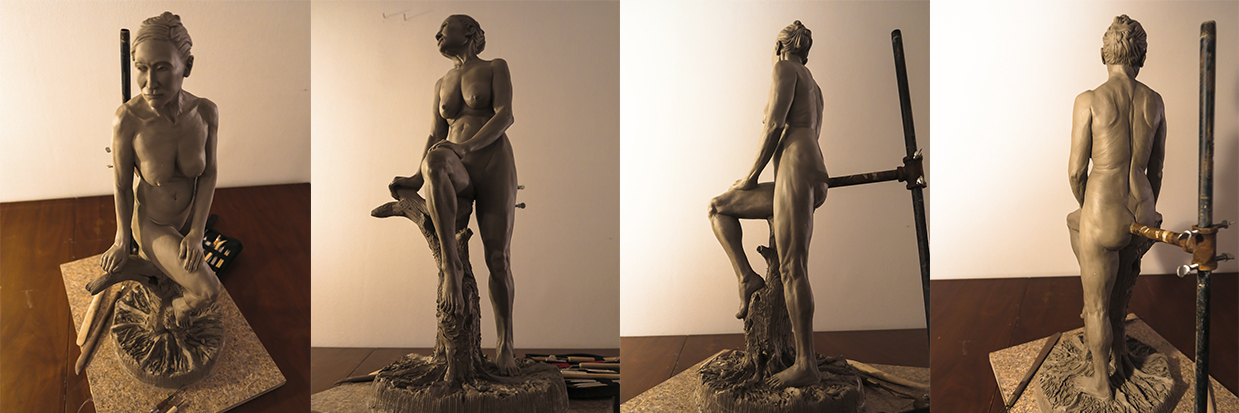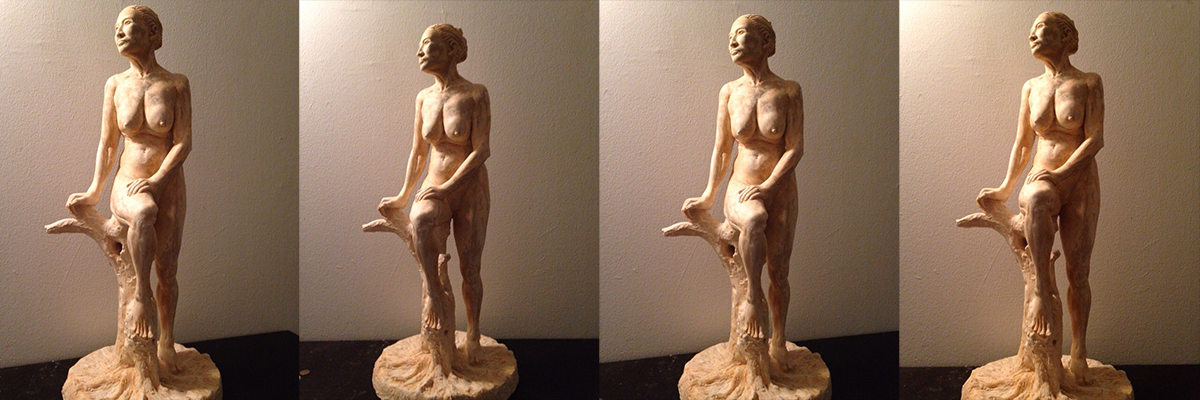Sculpture work at The Art Students League of New York
I took intensive courses of human figure and sculpting with a soft clay material. After finishing the sculpture in clay, I casted the piece in Aqua-resin and plaster. The anatomy references for the pieces were taken from models posing live 4 hrs daily, but I have also worked with those pieces after working hours at the League.
Sculptures
I have learned the way to sculpt and cast my pieces at The Art Students League of NYC, the teacher was the sculptor Anthony Antonios with the course: Modeling in Clay. He helped me to comprehend the anatomy of the poser models. I have also been an autodidact from my own observations, as well as learning anatomy from books and muscle references.
Making or buying the armature. The armature is an important step at the beginning since the armature will function as a support for the clay and it should have the correct proportions for the model. Time to add clay to your armature. From my point of view it is essential to observe the model before adding clay to the armature, the pose, the anatomy and the corporal rhythm.
he female piece at this point is ready to go to the next step. It’s time to create the mold to cast this piece in another material, which in this case will be a water-resin material to get the positive from the mold.
After arriving with my final piece in the casting room, I started tracing the division line on the clay sculpture to see where the mold will have the division to open it. I have inserted small cut pieces of aluminium cans all the way around, where the traced line guided me. That will be useful to divide the mold. I got professional help from the artist technicians in the casting room of the League to help me to comprehend the way to do this since it was my first time and my first piece.
My second piece was acquired on my last day at The Art Students League of New York
Ellen Taylor, an Art Collector and a portrait artist from Manhattan, NYC, bought my second piece ever made with my hands. She saw the sculpture at the Art Students League of New York, while I was working on it.
She commissioned the clay piece for casting in another material, to preserve the sculpture in her art collection. The sculpture is made in water based clay and sculpted from a model posing live.
I want to say that I got so happy that she appreciates my work, and that she wants to preserve the piece that took me one month to complete. Curiously, it all happened on my last day at the Art Students League of New York.
30x10x5 inch
Water based Clay.


Founded in 1875 by artists and for artists, the Art Students League of New York has been instrumental in shaping America's legacy in the fine arts. Many renowned artists have honed their skills at the League, which is dedicated to sustaining the great tradition of training artists.

The main campus in Manhattan, in the center of the world's most culturally vibrant city, is situated in a landmark building that has been the League's home since it was built in 1892.
Applying the first layer of plaster and ensambling banded tubes to protect the mold
once the division made it by the the small pieces of aluminum it’s time to apply the first layer of plaster to the piece let it be for one day and then ensemble the tubes to protect the piece-mold from the rest of the whole process until is time to remove the tubes and break the mold to extract the resin positive piece.

General observation of the entire process
Photos: 16,17,18,19,20 and 21.
You can see that after the plaster for the mold is already dry, I had to remove the armature and the clay to later clean all the fragmented pieces and apply the fiber glass layers inside, to create a strong layer before verting the liquid prepared resin text
Breaking the mold
At this stage the mold has been filled with the prepared resin, and 24 hours have passed, before I began separating the tubes from the mold and start breaking the plaster mold carefully with a hammer and a chisel.
∞
Extracting the final piece
After extracting the final piece from the mold, I started to resurface the cutting lines of the piece. The cutting lines were added during the beginning of the casting process, made with the aluminum pieces. I used different sandpapers and surgical tools to remove the particles of the plaster and covered unwanted marks with new preparation resin. In continuation, I once again re-sanded the entire piece to get the final smooth surface.
∞
Refining and polishing details on the final piece
The piece has finally been restored and unwanted lines and marks have disappeared. Finally, I’ve also applied a bath of sepia color pigment, to create some contrast in the cavities and details of the piece.
∞
The chosen material for the reproduction is Aqua resine, which is a long lasting, hard and resistent material. From New York, she followed me to Sweden, Gothenburg, where she is currently overlooking the island of Hisingen.
Second Sculpt at the league
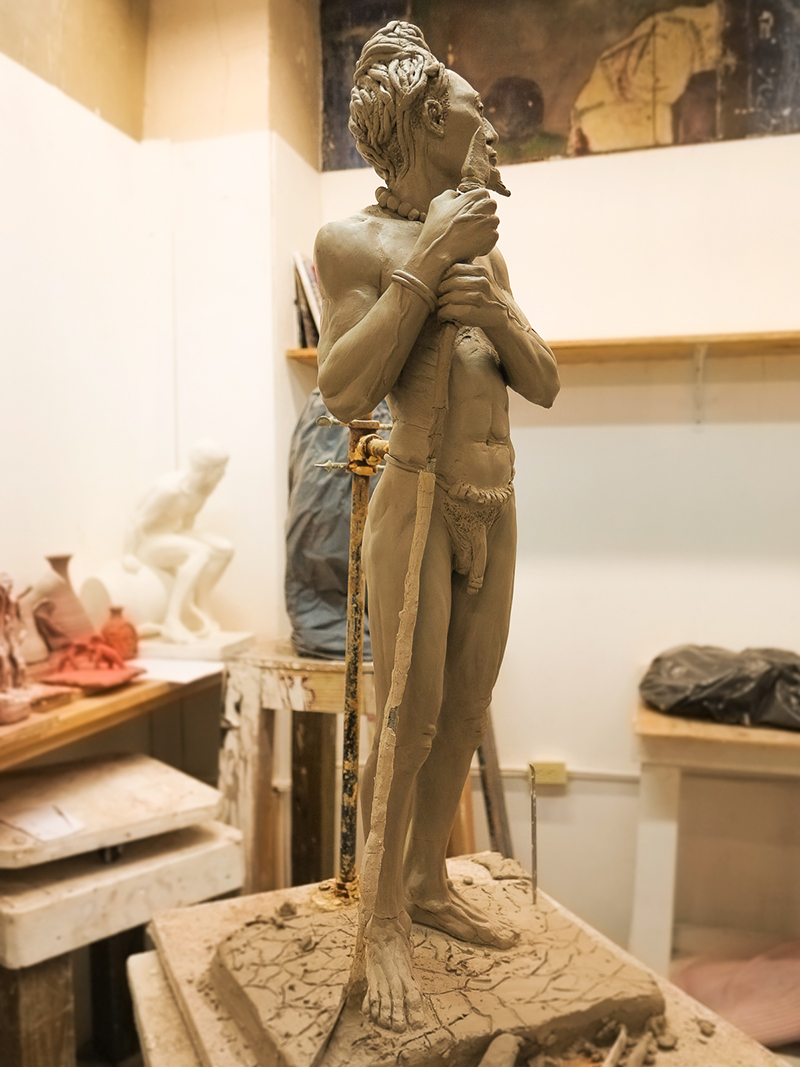
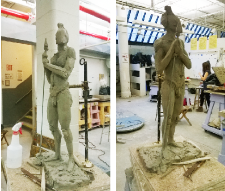
Sketching the proportions

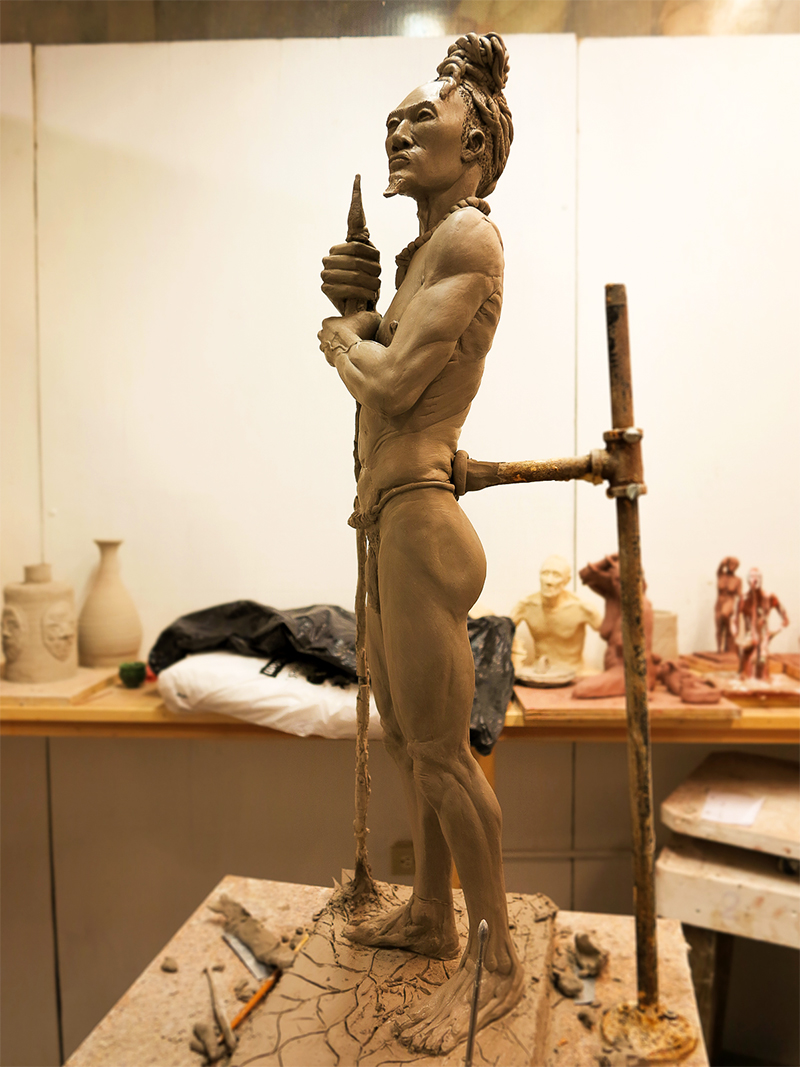
Final Piece. Water based clay
Sketching and finished
To preserve the piece, it is necessary to cast the sculpture into another material. The casting process of piece number 2, will be done in the US, California, where the buyer sent my sculpture to be casted into concrete.
Layers of plaster to make the mold
My final mission after selling the second piece was to apply the first layers of plaster, to preserve it and begin to build the mold for the casting process.
Final piece in water based clay
It has been important for me to work with my pieces from the beginning to the end, and learning the process of casting the sculpture into another material. Learning the complete process of sculpting has been a beautiful experience, and now I wish to continue with a new sculpture collection.

